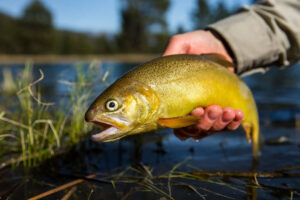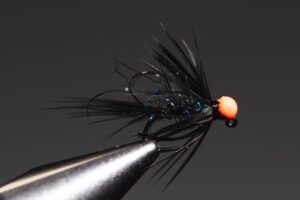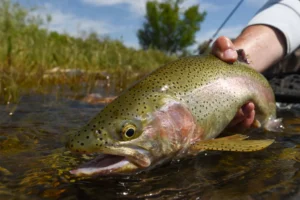Spring runoff can turn your favorite trout stream into a raging, muddy mess—but that doesn’t mean the fishing has to stop. In fact, with the right approach, spring runoff can provide some of the best trout fishing of the year. The key is knowing how trout behave during high flows and adjusting your strategy to match.
What Is Spring Runoff?
Spring runoff occurs when melting snow from the mountains flows into rivers and streams, increasing water volume and speed. This typically starts in late spring and can last several weeks, depending on snowpack and weather. The water is often colder, faster, and more turbid (cloudy), which challenges both the angler and the fish.
Where Trout Hide During Runoff
During high flows, trout conserve energy by moving out of the main current. Look for these prime holding spots:
- Soft Water: Areas with slower current, such as eddies, inside bends, and behind large rocks.
- Banks: Trout often hug the edges during runoff where the flow is less intense.
- Structure: Submerged logs, boulders, and deep pockets provide both shelter and feeding lanes.
Best Flies for Runoff Conditions
In murky water, trout rely more on movement and silhouette than on fine detail. Choose flies that are:
- Big and Bright: Use larger patterns with bold colors like chartreuse, orange, or black.
- Weighted: Tungsten bead-head nymphs, stoneflies, and streamers help get down to where the fish are holding.
- Worms and Eggs: San Juan Worms and egg patterns are excellent runoff flies, especially in muddy water.
Gear and Techniques
Fishing during runoff often requires stronger gear and more aggressive tactics:
- Heavier Tippet: Use 3X–4X fluorocarbon to withstand the stronger current and improve abrasion resistance.
- Split Shot and Indicators: Getting your fly deep is crucial—add weight and use an indicator to detect subtle takes.
- Streamers: Stripping streamers along slow banks or swinging them through soft seams can trigger aggressive strikes from big trout.
Safety First
Runoff fishing can be rewarding, but it’s not without hazards:
- Wade Carefully: Flows are fast and unpredictable—use a wading staff and never wade deeper than you’re comfortable.
- Watch the Weather: Sudden snowmelt or rain can rapidly raise water levels.
- Fish From Shore: Sometimes the best option is staying on solid ground and fishing the margins.
Final Thoughts
Spring runoff doesn’t mean you have to hang up your rod. With patience, adaptability, and the right approach, you can take advantage of trout that are hungry, active, and often less pressured. Embrace the challenge and you might be surprised by the quality of fish you catch.







